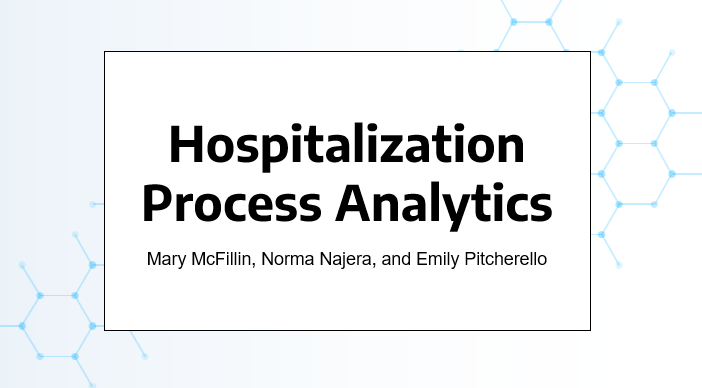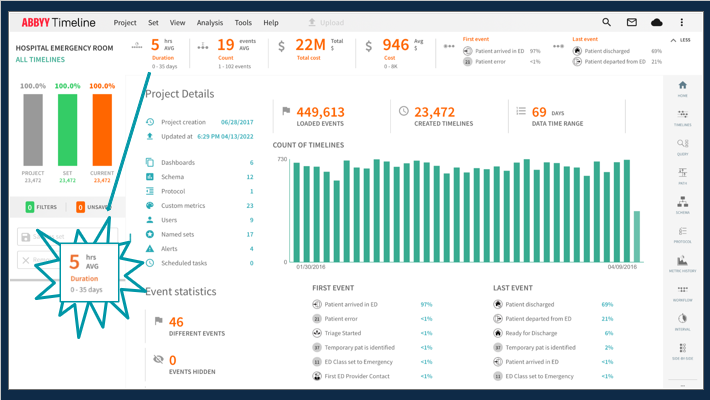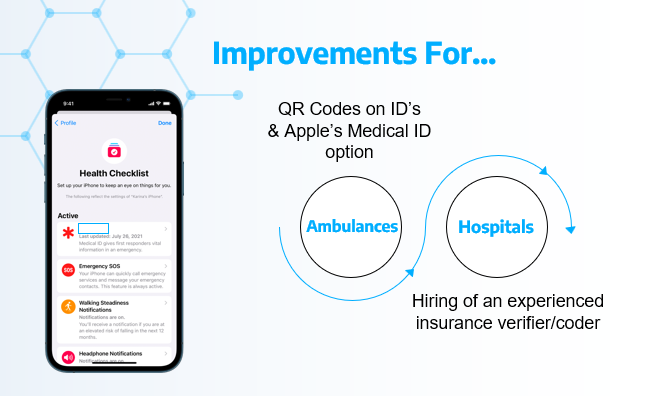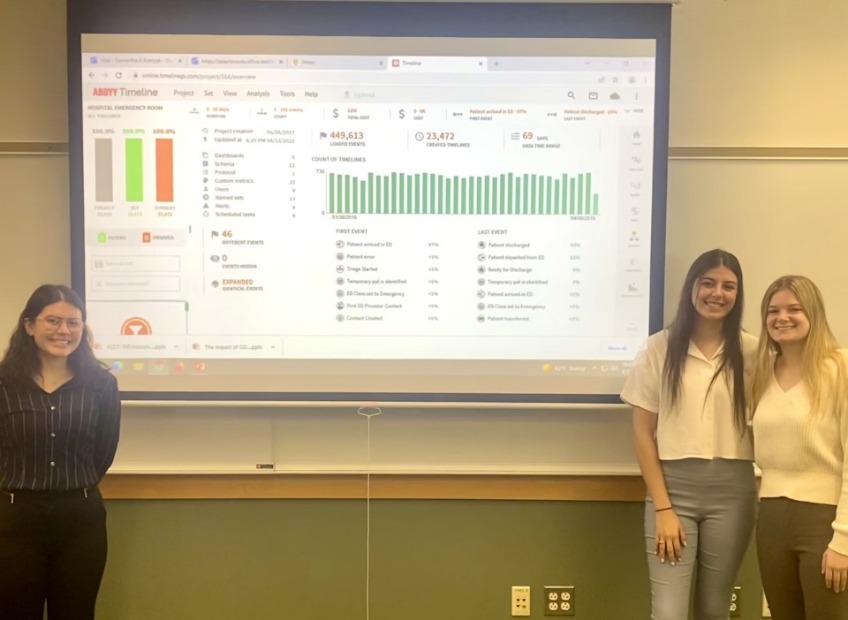Process Mining in Healthcare: Widener University Students Use ABBYY Timeline to Improve ED Patient Flow
Norma Najera
September 23, 2022

As an undergraduate student attending Widener University for my Bachelor's in Business Analytics and Marketing, I couldn’t pass up the opportunity to go big for student project day. My mind was scattered as I struggled to decide what topic I wanted to choose related to my major. My colleague, Emily Pitcherello, recalled that our professor Ryan Raiker, senior director of process intelligence at ABBYY, had provided us with insight into his work by explaining the usefulness of ABBYY Timeline a couple of months prior.
Related article: What is process mining?
We, plus our third colleague Mary McFillin, began researching and interviewing both Mr. Raiker and one of Widener’s graduate assistants, Evan Davis. With sample data provided by Mr. Raiker and Mr. Davis’s navigation, we were able to focus our research on a couple of key components, including:
- efficiency and timeliness within an emergency room,
- the effects of these findings,
- and our recommendations for how they could improve.
To get us started, we were provided electronic health records of anonymous cases from a nearby 800-bed hospital. From here, we were able to convert it into an Excel data sheet. This data included everything from means of arrival to providers involved and even nurses. We were then able to upload it to ABBYY Timeline and examine the overall emergency room (ER) hospitalization process.

My specific role in our research was to analyze the data and its significance. In order to make comparisons and find significant results, I conducted some research outside of the data. According to the New York Times and the Washington Post, on average 50 percent of patients transferred to the hospital come in through the ER and the patients in the US wait roughly 40 minutes before being transferred to the proper department. During this time, healthcare workers typically work towards identifying the patient's needs and symptoms. Once they are finished with that process, they take a little over two hours before patients are finally discharged. Ideally, the process should take no more than three hours.
ABBYY Timeline was able to demonstrate how, on average, the patients at this specific hospital waited around five hours in the ER. Since this is over seven times greater than the national average, we found it to be a concern and potential red flag.

As a team of aspiring analysts, we were able to find potential improvements for the hospital such as QR codes on personal identification meant for healthcare workers, greater use of Apple’s iPhone features related to Medical ID, and the hiring of an experienced insurance verifier/coder.

Through working with ABBYY Timeline, we were able to easily filter and navigate our data in order to find the results and issues we wanted to identify within this hospital. Furthermore, we were able to gain hands-on experience with process mining and its benefits to a company of any size.
As our world moves towards a heightened technology era, it's crucial for the next generation of analysts, actuaries, economists, statisticians, etc. to gain experience and knowledge within process mining in order to keep an edge on the ever-shifting times.

Curious to try a cloud-based, AI-driven process mining platform?
Subscribe for blog updates
- 10 Ways Process Mining Will Improve Your Business
- What Is Robotic Process Automation (RPA)?
- 3 AI Trends for 2025

